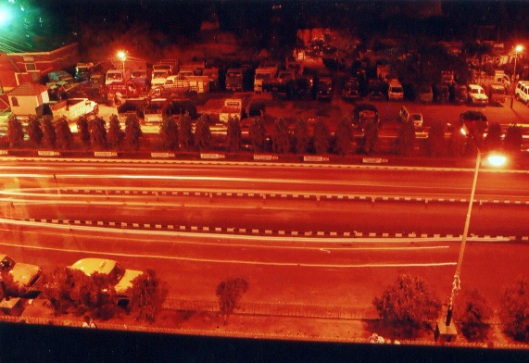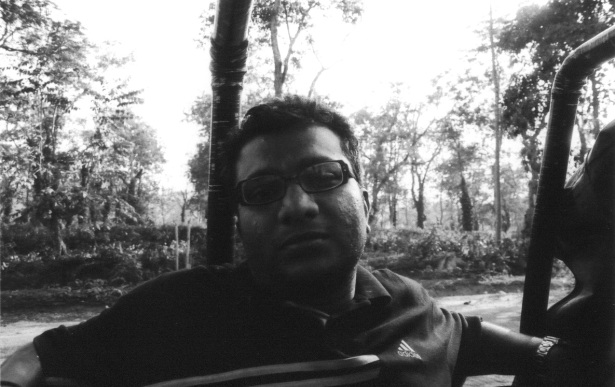The north-east of India is, in its own realm, beautiful, strange, fascinating and taxing. When someone left all the wondrous animals in Assam and taught its people the best use of bamboo, he must have stopped the local clock on his exit. When gentle clouds first touched Meghalaya, they must have graced it with a blessing, “Dear, you would rock.” When god wished to keep Arunachal unsullied, he placed it on a pedestal and severed the roads leading to it.
December 01, 2006 – January 01, 2007
The desire to visit the north-east of India was strong, and the decision to do so was unanimous. But how long would one need to get a reasonable understanding of a place, much of which is so shrouded in mystery? How many of us have friends who are from there? What information one gathered from the internet (the only source of news apart from first-hand accounts which compelled us to take it seriously) was still very rudimentary. As we listed the places to visit, it became apparent that we could in fact make a minor yellow pages directory. It was only then one realized the enormity of a task such as this.
The north-east is a place not just blessed with natural beauty. An integral and critical facet here is the lives of various tribes who inhabit the land. Presence of a wide range of flora and fauna, delicate relationships with neighbouring countries, a complex mix of neglect and largesse shown by the central government and cultures so different from mainland India were just a few other points to ponder while chalking out a workable schedule. And of course, the most important of all, how long to skip work?It was thus decided that a month was the least one could spend in learning about this strange land of ours and the most the boss would let you stay out of office. In such an arrangement, there were just two of us left with enough permission from work to travel when the first train departed Bangalore – me and Nagaraj. During the course of the month, we delighted at the advantages of traveling without a large group and despaired at junctures where two more people could have helped cut costs.
Bangalore – Kolkata
The Yeshwantpur Express leaves at 7:30 PM and reaches Howrah after 36 hours. There is another train that leaves Bangalore City at around 11:30 PM and heads straight to Guwahati via Kolkata, after some 50+ hours of travel.Having chosen the former purely to gain some rest after a long travel, it came as a surprise to see almost the entire S10 devoid of Kannadigas. In fact, apart from the caterers and myself, there were no obvious south-Indians in the bogey. Not that it mattered as I spent almost the entire journey lying lazily in my upper berth, thus missing Tirupathi, Vijayawada and Vishakapatnam. However, I did notice that the train travels in different directions to and from Vizag.
Naga, on the other hand, was to take a flight from Chennai.
Kolkata
I learnt from the IRCTC website that there was a Rail Yatri Niwas at Howrah. At around 8 in the morning, I went straight to that place. The procedure to get a room there is complicated, but seemed fair. It goes something like this:
a. You can get a room for just one day.
b. You have to have an arrival and departure ticket to and from Kolkata.
c. Check-out is strictly at 9:00 AM.
I registered my name at 8 and got a double room at 9:30 AM for Rs. 350. Naga (in pic) was to arrive in the evening. I had a bath and went out towards the Howrah bridge for a walk.
It soon became clear that at Howrah, going for a walk doesn’t quite imply an act of leisure; it becomes a compulsion. If the storm of heads walking toward the station wasn’t scary enough, how about train-loads of red-flag wielding activists shouting slogans? This was Kolkata – a small, crisp glimpse.
From the balcony, one could see the Hooghly river allowing frequent ferries to wade through it, even as the Howrah bridge towered over. There were people everywhere onto one side of the station. The other side was less infested and I took a stroll away from the traffic. Not since some sepia-toned period film had I seen such old buildings. They would and should have crumbled long back, but not for nothing do they give an impression of aristocracy, even in decline. This was old Britain, pre-independence India, with enough protests and struggle thrown into the cauldron of city life. A taxi parking lot resembled eerily the garage in Martin Scorcese’s Taxidriver, more Eastman-coloured buildings with run-down restaurants, a deserted street leading to a well-maintained Rail Museum. There was at least one passenger arguing with a taxi-driver at any given point of time. Policemen tried to make peace, but they had their work cut out. Some drivers would park their cabs and go for a walk while the parking lot got jammed by incessant taxi arrivals. My seat at the Yatri Niwas balcony was worth more drama than a high-priced ticket at any cinema. The Howrah bridge had been decorated with lights quite recently. There are two colours of lights that play alternately for a period of some three hours. It looks quite beautiful, but in red-flag Kolkata isn’t this a travesty?
The next day, Naga was caught photographing one of Kolkata’s rickety buses. His crime: he shot from the Howrah bridge. Now, it is just impossible to read the one and only sign prohibiting photography on the bridge. Unless one knows where the sign is, one can’t read it, and hence, the two policemen on guard found two sitting ducks in us. However, just to show that a hundred rupee note works the same in any state, be it communist, communalistic, monastic, pedantic, aquatic, static, whatever… as long as its in India, I got a handshake from the happy cop as he let us go, directing us to College Street. What’s more? He let us keep the photograph; a hundred rupees for a photograph of a bus which itself might be worth less than that.What a start to the tour. I had known so little about Kolkata, let alone the north-east!
Kolkata – Guwahati
The Kamrup is the most popular train to Guwahati from Kolkata. It goes all the way to Dibrugarh, but since it travels via stations like Barpeta Road, it takes a long time. The Saraighat, on the other hand, is a direct, super-fast train to the Assam capital. It’s a no-nonsense train that stops at only 10-11 stations and makes the journey in 17 hours. For some reason, it is less favoured. In my many years of traveling in long-distance trains, I haven’t seen a lonelier route than that of the Saraighat’s. It passes via Shantiniketan and New Jalpaiguri, but what is it that is so dark and gloomy in between? There was hardly a light for long, long distances, and with the train itself three-quarters full, it didn’t look a very safe journey. As if this wasn’t enough, a co-passenger scared as saying this is a dacoit-prone area. We were told to shut all windows and we wondered if it was the naxals or the Ulfa or some ISI related group. Just then, someone suggested that the train was entering Bihar. There you go, that’s a riddle solved.



